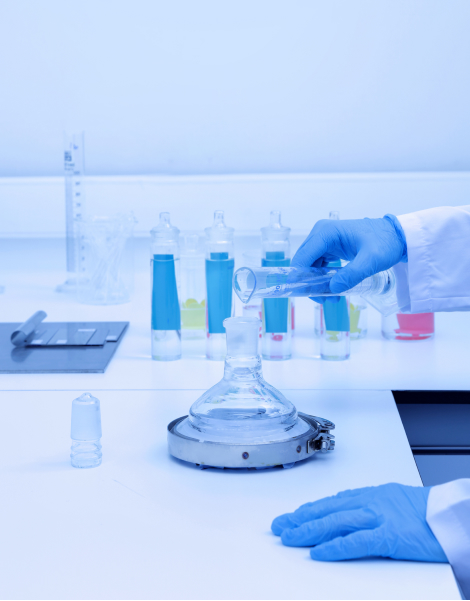Food Contact Substance and Material Analyses
Migration tests are the analyses that are carried out on packaging, kitchen equipment and food production machines that come into contact with food, and that determine the risk of migration of substances that pose a toxicological risk to food.
Factors affecting migration analysis are as follows:
- Structure of food
- Contact time
- Contact temperature
- The structure of the package and the amount of substance used in its content
Total migration is expressed as the sum of all substances that can migrate from food contact materials to food.
Published by the Ministry of Agriculture and Forestry; Test procedures are carried out on packaging materials within the scope of the “Turkish Food Codex Communiqué on the List of Food-Like Used in the Migration Test of Components of Plastic Substances and Materials in Contact with Food”.
The food simulations used in migration analysis are as follows;
Food-like A: Juicy Food, 10% Ethyl Alcohol
Food-like B: Acid Food, 3% Acetic Acid
Food-like C: Alcoholic Food, 20% Ethyl Alcohol
Food-like D1: Fatty Food, 50% Ethyl Alcohol
Food-like D2: Fatty Food, Vegetable Oil
Food-like E: Dry Food, Poly (2,6-diphenyl-p-phenylene oxide)
Total Migration Analysis Migration Dry Foods Modified Polyphenylene oxide (MPPO)
Total Migration Analysis Full Immersion (Aqueous Foods-Aqueous, Acidic, Alcoholic)
Total Migration Analysis Product Control (Aqueous Foods-Water, Acidic, Alcoholic)
Total Migration Analysis Substitution Test Method (Oily-95% Ethanol and Isooctane)
Specific migration test; It is tested in various food packages such as plastic cups, water bottles, feeding bottles, inner surface of cans.
During testing, food simulations are assigned to simulate migration to see if migration limits are appropriate. A comparative evaluation is made to determine the transition boundaries. In order to obtain accurate results, there are processes such as testing time, temperature and preparing a test environment that will represent the worst possible environmental conditions of plastic materials or articles. The test is carried out by creating standard test conditions in a suitable environment that includes all these processes.
Determining the type of plastic packaging materials in contact with Foodstuffs and the additives used is especially important for the protection of consumers.
Food is in contact with the packaging until it reaches the consumer's hand. For this reason, it has become important to determine the quality of the packaging material to protect the food from environmental factors and microorganisms and whether there is any harmful chemical in the structure of the packaging.
Analyses made within the scope of specific migration tests:
- Bisphenol A ([2,2-bis(4-hydroxyphenyl) propane)
- Heavy Metal Determination (Lead, Cadmium, Mercury, Arsenic, Aluminium, Copper, Barium, Zinc, Iron, Cobalt, Lithium, Manganese, Nickel)
Determination of Structure Analysis in Packages
It is carried out with the FT-IR Spectroscopy device to determine the type of material and additives used in food packaging. The FT-IR spectroscopy device used for the detection of organic compounds is the most suitable method for plastic products used in the packaging industry. With the FTIR spectroscopy device, qualitative and quantitative material determination can be made on the packaging material. FTIR spectroscopy device is infrared vibration spectroscopy. With the analysis made, fundamental vibration, stress-spin modes in the electromagnetic spectrum allow us to have information about the chemical profiles of molecules.


